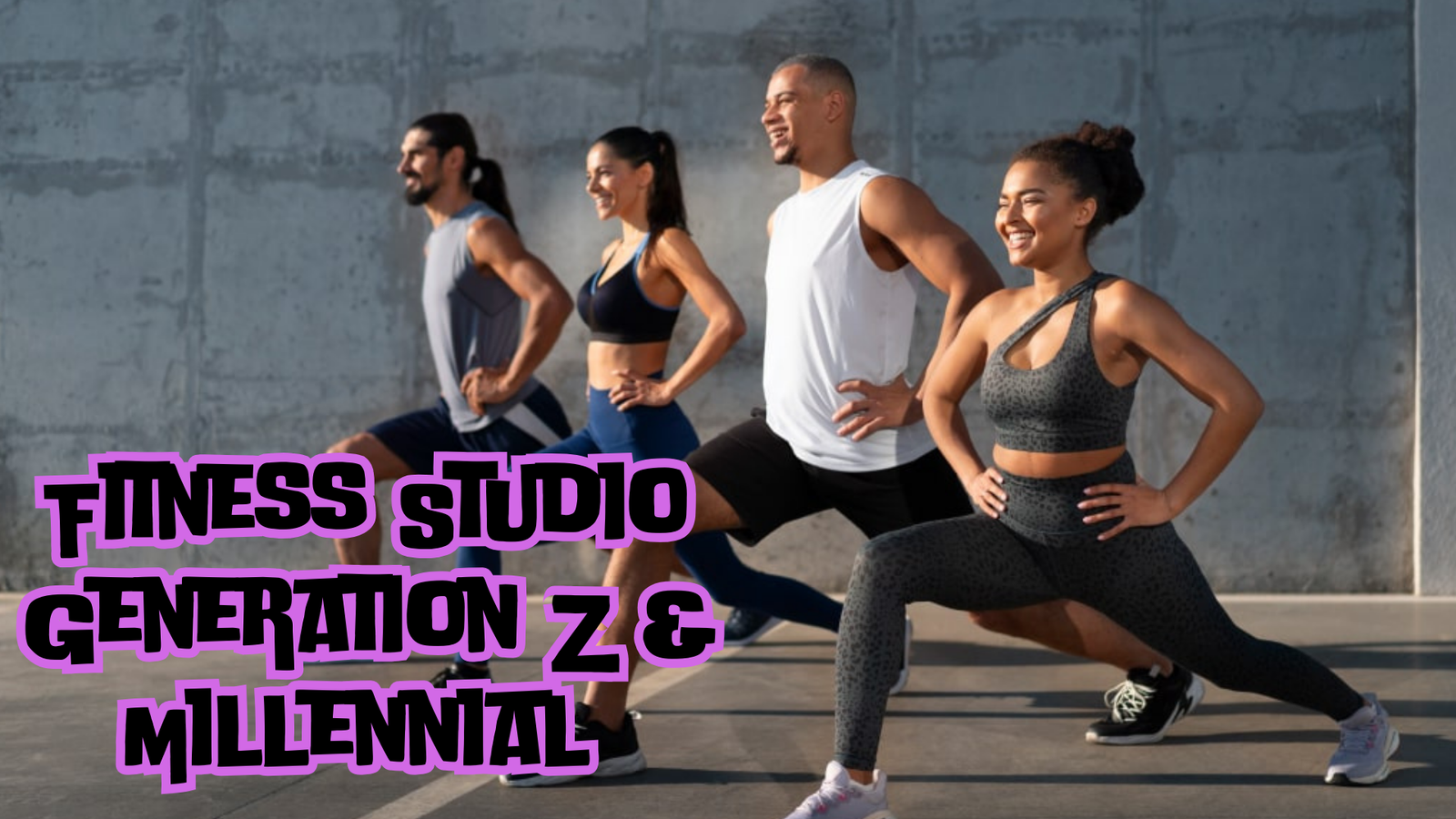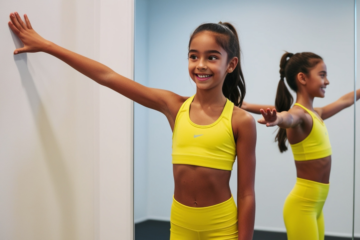Hello people! Thinking of the right strategies to employ to ensure that Gen Z & Millennials visit your fitness studio?
Competition is stiff in the fitness industry, and to sustain future growth for your gym studio, you will need to target young people, including the Millennials and Gen Z. These two groups are the focus of the next-generation fitness industry.
Therefore, fitness studios should consider their needs, wants, culture and prevailing trends. If you are to create a fitness studio that appeals to these groups, you must be creative, interested and, most importantly, understand what drives these people.
Let’s dive in!
Table of Contents
Understanding Gen Z & Millennials

Another appreciable symptom of this evolution of the fitness consumer is the ability to track performance rights.
However, let us specify general assumptions about Gen Z and Millennials before further analyzing the strategic approaches.
- Millennials (born between 1981 and 1996): This generation has grown up with digital media, which constantly communicates convenience to it. Micronutrients for them include all-around health, with body health as the core, being a marriage between physical and psychological health plus spiritual welfare. The article by the American Psychological Association states that Millennials are more inclined to symbolize balance and integrate various aspects than their precursors.
- Gen Z (born between 1997 and 2012): Gen Z has been raised in a completely digital age, and they are technologically literate, they are concerned with social justice, and they appreciate originality. They demand higher individualistic, integrated solutions and appreciate the ideas that adapt to sustainable values or include everybody. According to WELL + GOOD, it was established that 75% of Gen Z customers insisted on being affiliated with fitness brands that undertake both environmental conservation and social responsibilities.
Build a High-Tech Integration with No Mishaps
Technology integration in fitness is one of the biggest trends defining Millennial and Gen Z populations. This includes workout applications and virtual classes, fitness trackers, and even an application that prescribes workouts.
For instance, a Statista report estimates that the global market for fitness apps will reach $14.7 billion by the year 2027, and such a market is mainly attributed to the younger generation.
How to Integrate Technology into Your Fitness Studio:
- Offer Virtual Classes & On-Demand Content: The lack of the need to go to a fitness center is a favorite aspect of exercising among Millennials and Gen Z. Indeed, in and out of doors, they like the sophisticated way they can get premium fitness content. Introducing the virtual option or incorporating fitness apps such as the Peloton or Trainerize into your studio’s model may be an advantage.
- Incorporate Wearable Tech: Techniques such as Fitbit, Apple Watch, and Oura ring help members track their progress, heart rate, and overall health. Through branded partnerships with wearable providers or by tracking Member data to customize respective studio activities, you can address all your tech-active members.
- Interactive Fitness Equipment: Many fitness studios are now installing interactive machines, such as Peloton bicycles or smart rowing machines. These pieces of equipment present fun forms of exercise, and they are especially popular among the young market.
Organize a Multi-Model Health Promotion Model
Much as Gen X was into weights or treadmills, millennials and Generation Z are more holistic with their fitness, implicating the need to be mentally fit, eat smart, meditate, and be good to oneself.
To address this mindset, your fitness studio should provide options that are not confined to only training routines.
Ideas to Build a Wellness-Centric Studio:
- Mindfulness & Recovery Services: Both generations value mental health and relaxation. You can integrate yoga, meditation, or breathing sessions into the schedule to round up a good wellness plan. Healthcare recovery services such as cryotherapy, infrared saunas, and massage, among other services, are also on the rise.
- Nutritional Guidance: Delivering health-conscious nutrition advice, implementing or running sessions about healthy diets for the audiences, or just the intake of natural and organic products in their smoothies and juices can strike the appropriateness for the health-oriented members. While these services can be viewed as a good source of other income, they can also help enhance your brand’s credibility.
- Self-Care & Relaxation Spaces: Design areas in your studio for members to cool off after exercising or losing weight. Services such as comfortable lounges, aromatherapy, or skin care stations might be useful.
The following video explains about Health Promotion Model:
Promote a Competent Malaya Community

There is no fitness for the Gen Z and Millennial generations; it is more like finding people who share their interests. These are social generations who always want to have a feeling of being in a group they belong to.
Moreover, the Mindbody survey found that the 18-34 age group value a sense of community as the reason they maintain their gym memberships at 65%.
How to Build a Community-Centric Studio
- Offer Group Classes & Events: Spin, yoga, or HIIT classes during group fitness enable members to connect with one another. Members can also be encouraged to stay active through timely community events or a regular exercise challenge.
- Leverage Social Media for Engagement: Millennials and Gen Z are active on social media, especially Instagram, TikTok,kTok, and YouTube. Engage in these mediums to celebrate members’ activities, inform about community events, and share fitness tips. You can also develop hashtag campaigns aimed at people who want to share their fitness experiences, thus creating an internet community for your studio.
- Highlight Inclusivity & Diversity: The respondent analysis shows that both Millennials and Gen Z are conscious of the brand and its demographic sensitivity index. Of Course, make your studio inviting to all persons irrespective of their race, age, size, or fitness capabilities. Promote these values in your marketing and make sure your business is welcoming for everyone who seeks your services.
Give Membership Plans
The most obvious pressure emerging from Millennials and Gen Z is that of flexibility. Self-sufficiency is a highly rated attribute among consumers of both generations, making them reluctant to participate in long-term and committed contract or classic subscription membership models.
Ways to Offer Flexible Memberships
- Offer Class Passes or Pay-Per-Class Models: This kind of lets people pick how often they would like to go to the gym but is not really tied down to working out like with a membership.
- Membership Tiers: Offering tiers should allow for flexibility in membership choices, such as being restricted to certain classes, virtual services, or supplementary wellbeing perks. This tiered approach also opens your studio to a vast population of people who can enjoy your music.
- Mobile App Integration: Members can sign up for classes and also keep track of their workouts using an easy-to-use app. Gen Z and millennials are on the go, so they respond well to platforms that make going to the gym easier.
This Implies that Sustainable Practices
Sustainability is an important issue for Millennials and Gen Z, so it is popular. These generations are concerned about social justice and the environment, and they will buy from companies that reflect these beliefs.
The Deloitte Global survey reveals that 64% of Generation Z respondents look for a sustainability-focused brand.
Sustainable Studio Practices
- Eco-Friendly Equipment: Select green gym equipment, such as organic yoga mats, carbon footprint-producing gym weights, or equipment that conserves energy. Even simple alterations, like switching from ordinary cleaning products to environmentally friendly ones, will impact some members.
- Green Studio Design: You can use electricity-saving lamps to illuminate the studio, collect and recycle waste, or incorporate organic materials in the interior design. To help out in this area, you can go paperless by encouraging online sign-ups, waivers, and communications.
- Support Local & Ethical Brands: Source your merchandise, supplements, and food from local, sustainable businesses that align with your values. This can help brand your studio as a socially sensitive brand in society.
Offer Personal & Customized Products
Today’s young customers, especially Millennials and Gen Z, are interested in the individual approaches they aim to get. Tailor-made programs such as workouts, training sessions or fitness assessments also enhance one’s studio.
Personalization Ideas:
- Personalized Workouts: Take an example of information gathered from fitness watches or member fitness evaluations to develop custom workout routines for your members.
- Customized Recovery Plans: Additional services that can supplement the fitness services include offering personal workout plans and nutritional eating plans, recommending special stretches, or offering a post-workout massage.
- Social Media Customization: The other way would be to allow your members to present their fitness transformations on your studio’s social media profiles, sharing their stories.
Conclusion
You can’t make your fitness studio look anything but irresistible to Gen Z & Millennials.
First, the values and choices of what millennials and Gen Z would prefer in a fitness studio must be understood. Here are ways to incorporate the factors appealing to the generations: incorporating technology into the business, allowing flexible membership, incorporating wellness, and making the business a supportive community.
Do not forget, Gen Z and Millennials are not just seeking a place where they can exercise, but also the brand that they want to be associated with; this experience is wanted to be part of a community where they can fit in and the overall experience to be almost frictionless to their current busy lives.
With these strategies implemented fully, your fitness studio can be turned into a place where clients will not only engage in improving their fitness goals but will associate themselves with your brand.
FAQ
1: What are the factors which interest Gen Z & Millennials in a fitness studio?
Self-service, technology, a nontraditional membership approach, and creating a culture of people.
2: How relevant is sustainability to Generation Z & Millennials in the fitness industry?
It is also important for them to choose the studios with effective eco-friendly policies.
3: How do I incorporate technology into my fitness studio?
Presents virtual classes, smart equipment and applications for tracking physical fitness.
4: Which fitness classes are allowed for Millennials and Gen Z?
HIIT, yoga, dance, and a session separated according to one’s fitness goals are preferred.
5: What measures do you have that will help you form a community for your fitness studio?
Host group events, use social media, and become inclusive.



